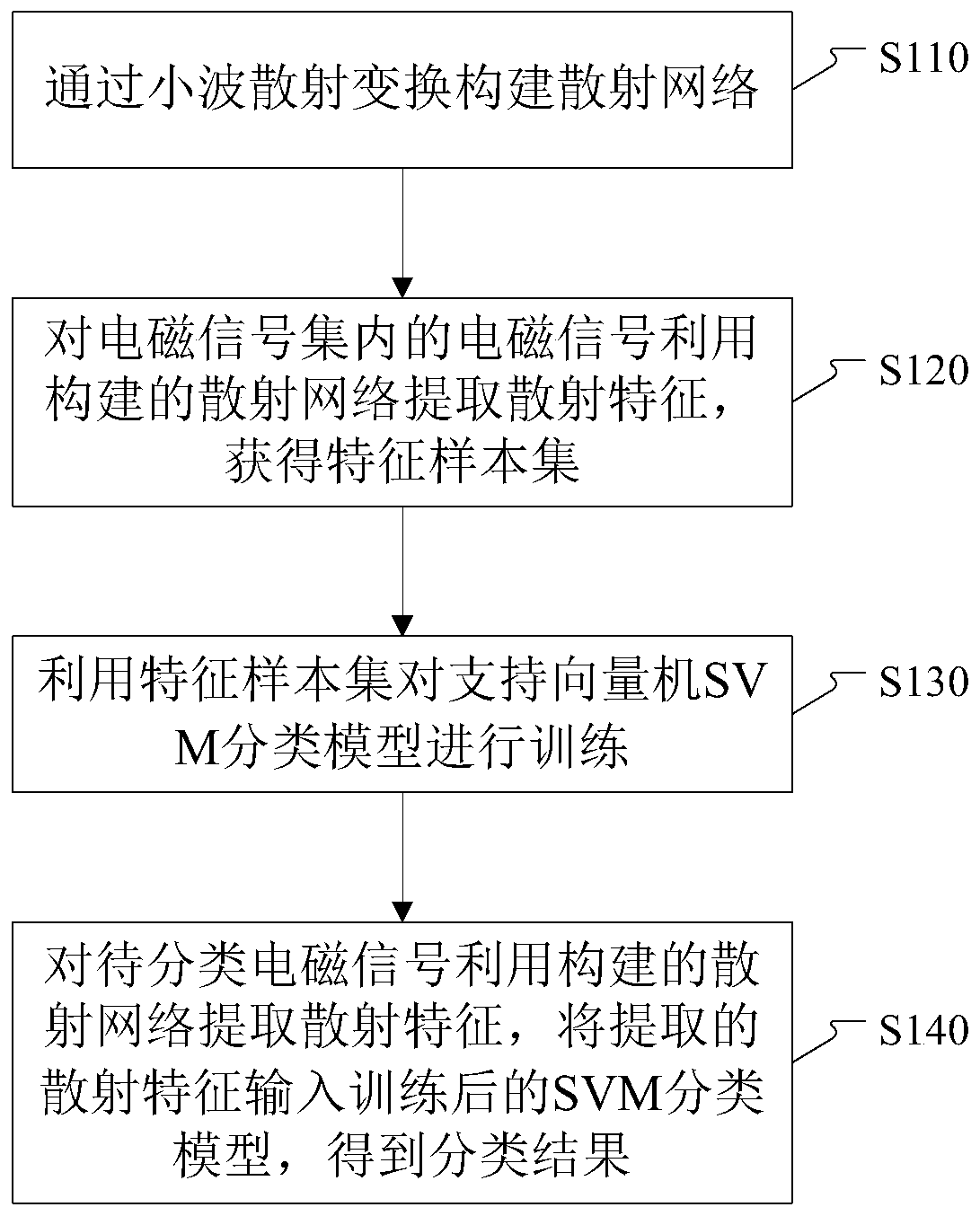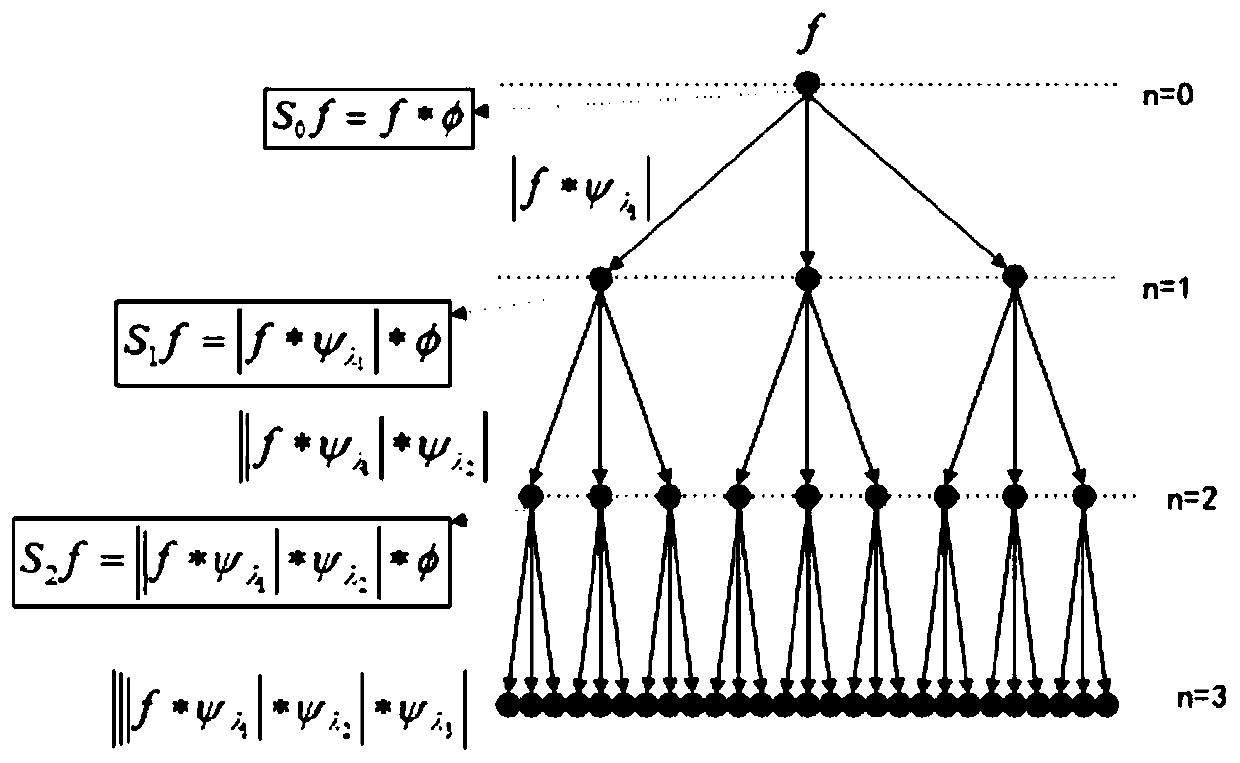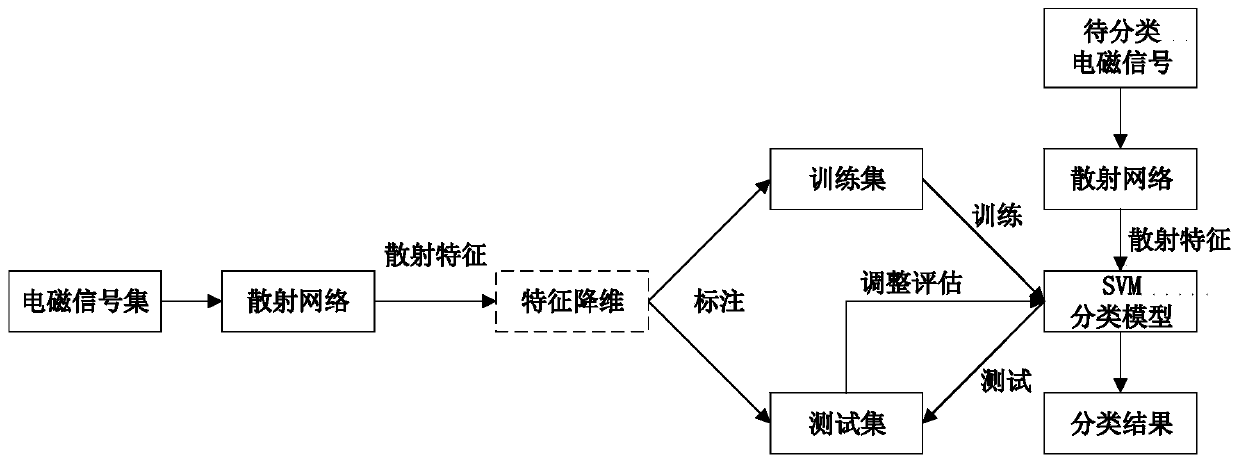Electromagnetic signal classification method and device
An electromagnetic signal and signal technology, applied in character and pattern recognition, instruments, computer parts, etc., can solve the problems of unsatisfactory anti-noise performance and high computational complexity, achieve efficient and accurate electromagnetic signal classification, reduce computational complexity, Overcome the effect of noise interference
- Summary
- Abstract
- Description
- Claims
- Application Information
AI Technical Summary
Problems solved by technology
Method used
Image
Examples
Embodiment Construction
[0022] Exemplary embodiments of the present invention will be described in more detail below with reference to the accompanying drawings. Although exemplary embodiments of the present invention are shown in the drawings, it should be understood that the invention may be embodied in various forms and should not be limited to the embodiments set forth herein. Rather, these embodiments are provided for more thorough understanding of the present invention and to fully convey the scope of the present invention to those skilled in the art.
[0023] In 2012, Mallat et al., inspired by the deep convolutional neural network, proposed a convolutional network model with strict mathematical theory support and excellent feature extraction capabilities: wavelet scattering convolutional neural network. This network structure is very similar to the deep convolutional neural network, but its filter is a pre-set wavelet filter, which does not need to be learned. The features obtained translati...
PUM
 Login to View More
Login to View More Abstract
Description
Claims
Application Information
 Login to View More
Login to View More - R&D
- Intellectual Property
- Life Sciences
- Materials
- Tech Scout
- Unparalleled Data Quality
- Higher Quality Content
- 60% Fewer Hallucinations
Browse by: Latest US Patents, China's latest patents, Technical Efficacy Thesaurus, Application Domain, Technology Topic, Popular Technical Reports.
© 2025 PatSnap. All rights reserved.Legal|Privacy policy|Modern Slavery Act Transparency Statement|Sitemap|About US| Contact US: help@patsnap.com



